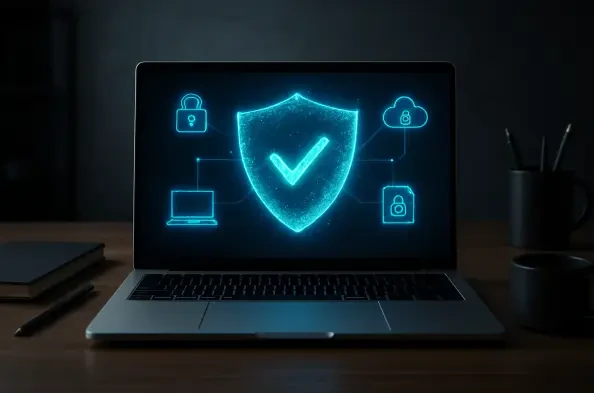In today’s rapidly shifting digital environment, the importance of robust endpoint security and network monitoring cannot be overstated, as cyber threats grow increasingly sophisticated and damaging. Recent industry updates from the week of September 5th, compiled by Solutions Review, reveal how leading companies are harnessing artificial intelligence (AI) and unified platforms to revolutionize cybersecurity. With major players like Palo Alto Networks, Detectify, and OPSWAT leading the charge, the focus is on combating everything from evasive attacks to insider breaches that cost organizations millions. The financial impact, highlighted by a report estimating an average loss of $2.7 million per file-related breach, underscores the critical need for innovative defenses. This article delves into the latest advancements, exploring how AI-driven tools and integrated systems are reshaping the battle against cybercrime. As the stakes continue to rise, understanding these developments offers a glimpse into the future of digital protection.
Harnessing AI for Smarter Threat Detection
The integration of AI and machine learning into cybersecurity solutions marks a pivotal shift in how threats are identified and neutralized. Platforms like Palo Alto Networks’ Prisma SASE 4.0 exemplify this trend, leveraging over 140 pre-trained machine learning classifiers to enhance data security and classification. This approach enables organizations to detect subtle, evasive threats that often slip past traditional defenses, providing a proactive stance against potential breaches. Beyond mere detection, AI empowers systems to predict attack patterns, offering a layer of foresight that is becoming indispensable. As cyber attackers grow more cunning, the ability to anticipate and counteract their moves with intelligent algorithms represents a significant leap forward in safeguarding sensitive information and critical infrastructure.
Equally transformative is the application of AI in vulnerability management, as demonstrated by Nucleus Security’s Nucleus Insights platform. This tool prioritizes critical vulnerabilities with actionable intelligence, ensuring that security teams focus on the most pressing risks first. Unlike older, reactive methods, this AI-driven prioritization cuts through the noise of endless alerts, streamlining response efforts. The result is a more efficient allocation of resources, allowing organizations to address high-impact threats before they can be exploited. This trend toward predictive security, seen across multiple vendors, highlights a broader industry realization that staying ahead of cybercriminals requires not just reaction, but anticipation. As AI continues to evolve, its role in fortifying endpoint security becomes ever more central to organizational resilience.
Building Unified Platforms for Comprehensive Defense
The era of fragmented security tools is fading as the industry gravitates toward unified platforms that deliver seamless oversight across diverse IT environments. Auvik’s recent updates to its IT management platform stand as a prime example, offering unified visibility into devices and software to simplify complex network monitoring. By consolidating data into a single, coherent view, such platforms reduce the risk of oversight and enable IT teams to manage sprawling digital assets with greater ease. This shift is particularly crucial in today’s distributed work settings, where endpoints span multiple locations and cloud environments, creating vast attack surfaces. The drive for integration reflects a growing consensus that siloed defenses are no longer viable against sophisticated threats.
Further illustrating this trend is Portnox’s collaboration with SentinelOne, which merges zero-trust access control with AI-powered endpoint protection. This combination ensures that every access point and device is continuously verified and secured, creating a robust barrier against unauthorized intrusions. Meanwhile, Detectify’s advanced API scanning capabilities target vulnerabilities in modern applications, addressing a critical layer of security often overlooked. These unified approaches minimize gaps in protection by linking network, endpoint, and application defenses into a cohesive ecosystem. As organizations grapple with increasingly intricate IT landscapes, the adoption of integrated platforms offers a streamlined path to resilience, ensuring that no aspect of the digital infrastructure remains exposed to potential exploitation.
Addressing the Hidden Danger of Insider Threats
Insider threats, whether stemming from negligence or malicious intent, pose a formidable challenge to organizations, often resulting in significant financial and operational damage. A recent report by OPSWAT and the Ponemon Institute highlights the severity of file-related breaches, with costs averaging $2.7 million per incident. These incidents underscore the vulnerability created by human error or internal malice, which can bypass external defenses and wreak havoc from within. As remote work and digital collaboration expand, the opportunities for such breaches multiply, making it imperative for companies to fortify their internal security measures. The industry’s response is increasingly focused on leveraging technology to detect and mitigate these risks before they escalate into full-blown crises.
To counter this growing menace, many vendors are turning to AI-driven detection tools and policy enforcement mechanisms. Such solutions analyze user behavior and file interactions in real time, flagging anomalies that might indicate a threat. By automating the identification of suspicious activities, these tools reduce reliance on manual oversight, which is often too slow to prevent damage. Beyond detection, stricter access controls and data encryption are becoming standard practices to limit the potential impact of insider actions. This multi-layered approach reflects an understanding that insider threats require both technological innovation and cultural shifts within organizations. As awareness of these risks heightens, the deployment of advanced monitoring and mitigation strategies is proving essential to protecting sensitive data from internal vulnerabilities.
Prioritizing Speed and Automation in Threat Response
In an era where cyber threats can materialize in mere moments, the ability to respond swiftly is a defining factor in minimizing damage. WatchTowr’s groundbreaking reduction of rapid reaction times from hours to minutes showcases the power of automation in addressing emerging vulnerabilities. By streamlining the identification and mitigation process, such advancements ensure that threats are neutralized before they can exploit weaknesses in a system. This emphasis on speed is particularly vital as attackers leverage automation themselves, launching rapid, large-scale assaults that overwhelm traditional response timelines. The race against time is a central battleground in modern cybersecurity, where every second counts.
Complementing speed is the role of automation in reducing operational burdens, as seen in Auvik’s Smart Alert Suppression feature. This tool filters out irrelevant notifications, cutting down on alert fatigue that often plagues IT teams and distracts from critical issues. By automating routine tasks and prioritizing actionable alerts, organizations can allocate their human resources to strategic problem-solving rather than repetitive monitoring. This efficiency not only enhances response capabilities but also improves overall team morale and productivity. As the volume and complexity of threats continue to grow, the integration of automated systems into security workflows is emerging as a key differentiator, enabling companies to maintain robust defenses without being overwhelmed by the sheer scale of potential risks.
Navigating Industry Consolidation and Expansion
The cybersecurity sector is witnessing a wave of consolidation as companies seek to broaden their capabilities and strengthen their market positions through strategic acquisitions. A notable instance is UltraViolet Cyber’s acquisition of Black Duck’s application security testing business, a move that enhances its offensive and defensive offerings. Such consolidations allow firms to combine expertise and resources, creating more comprehensive solutions that address a wider array of security challenges. This trend is driven by the recognition that the multifaceted nature of cyber threats demands a diverse set of tools and skills, often beyond the scope of a single vendor. As a result, mergers and partnerships are reshaping the competitive landscape, fostering innovation through collaboration.
This strategic growth also reflects a broader industry effort to adapt to the evolving demands of endpoint security and network monitoring. By integrating complementary technologies, companies can offer end-to-end platforms that reduce complexity for their clients, streamlining the implementation of robust defenses. The focus on expansion is not merely about market share but about building resilience against an ever-changing threat environment. Customers benefit from access to more integrated services, which eliminate the need for multiple disparate tools and vendors. As consolidation continues, the industry is likely to see further innovation, driven by the synergy of combined expertise and resources, ultimately fortifying the collective ability to combat cybercrime on a global scale.
Reflecting on a Path Forward for Cybersecurity
Looking back, the strides made in endpoint security and network monitoring during the week of September 5th painted a picture of an industry at a critical juncture, balancing innovation with the urgent need to counter escalating threats. The integration of AI, the push for unified platforms, and the focus on speed and automation stood out as defining achievements that reshaped defensive strategies. Moving forward, organizations must prioritize the adoption of these technologies, tailoring them to their unique environments to maximize effectiveness. Investing in employee training to mitigate insider risks and staying abreast of industry consolidations will also be crucial steps. As the cyber landscape continues to evolve, fostering collaboration between vendors and businesses could unlock new solutions, ensuring that defenses remain agile and resilient against future challenges.






